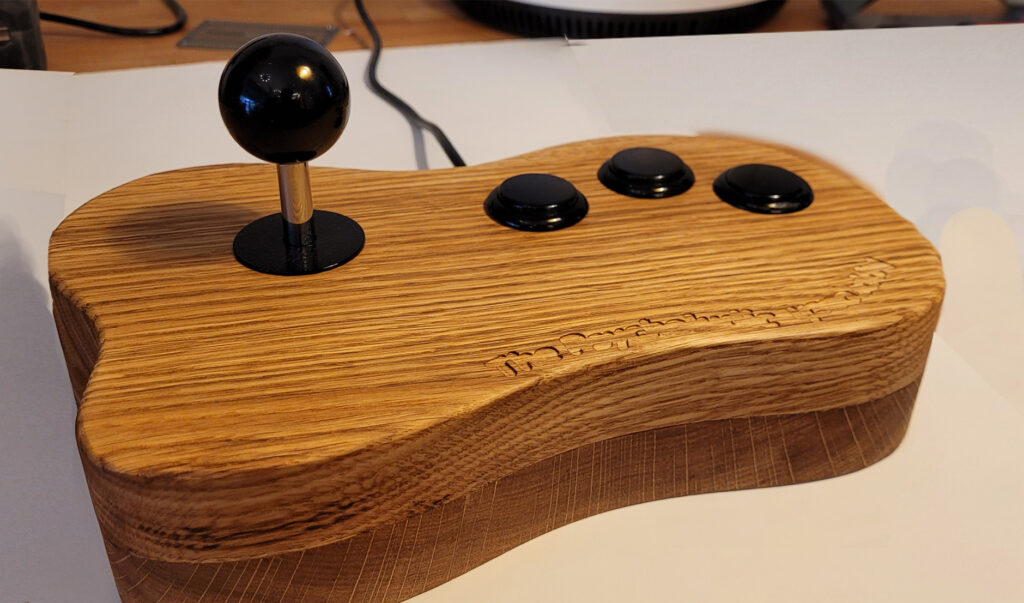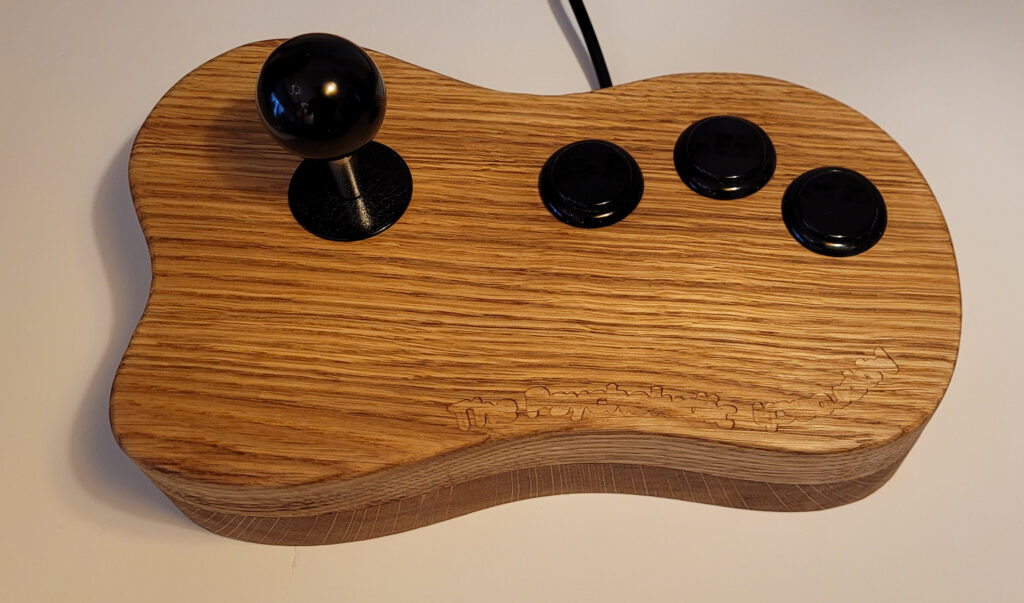Building a Custom Wooden Controller: CNC, ESP32
The Idea
I wanted a controller with a high-quality joystick, three buttons, and a solid wood body—something ergonomic, durable, and aesthetically pleasing. Instead of using plastic, I opted for wood for a natural feel and long-lasting build.

CNC Machining and Design
The design process started with precise modeling to ensure a comfortable grip. Using a CNC machine, I carved out the enclosure, keeping tolerances tight for the joystick and buttons. The goal was a smooth, well-fitted assembly with minimal post-processing.
Electronics and Integration
The joystick and buttons connect to an ESP32, which handles input processing and communicates with the computer. Wiring was kept clean, ensuring reliability. The ESP32’s wireless capabilities also allow for future upgrades if needed.
Finishing and Assembly
After CNC carving, I fine-sanded the wood for a smooth touch and applied a natural oil finish for durability. Once dried, the components were mounted, and the controller was tested. The result: a custom, functional wooden controller that balances form and function.

Next Steps
This build opens possibilities for further refinements—adjusting ergonomics, trying different woods, or exploring wireless functionality. For now, it’s a working, handcrafted controller that feels great to use.